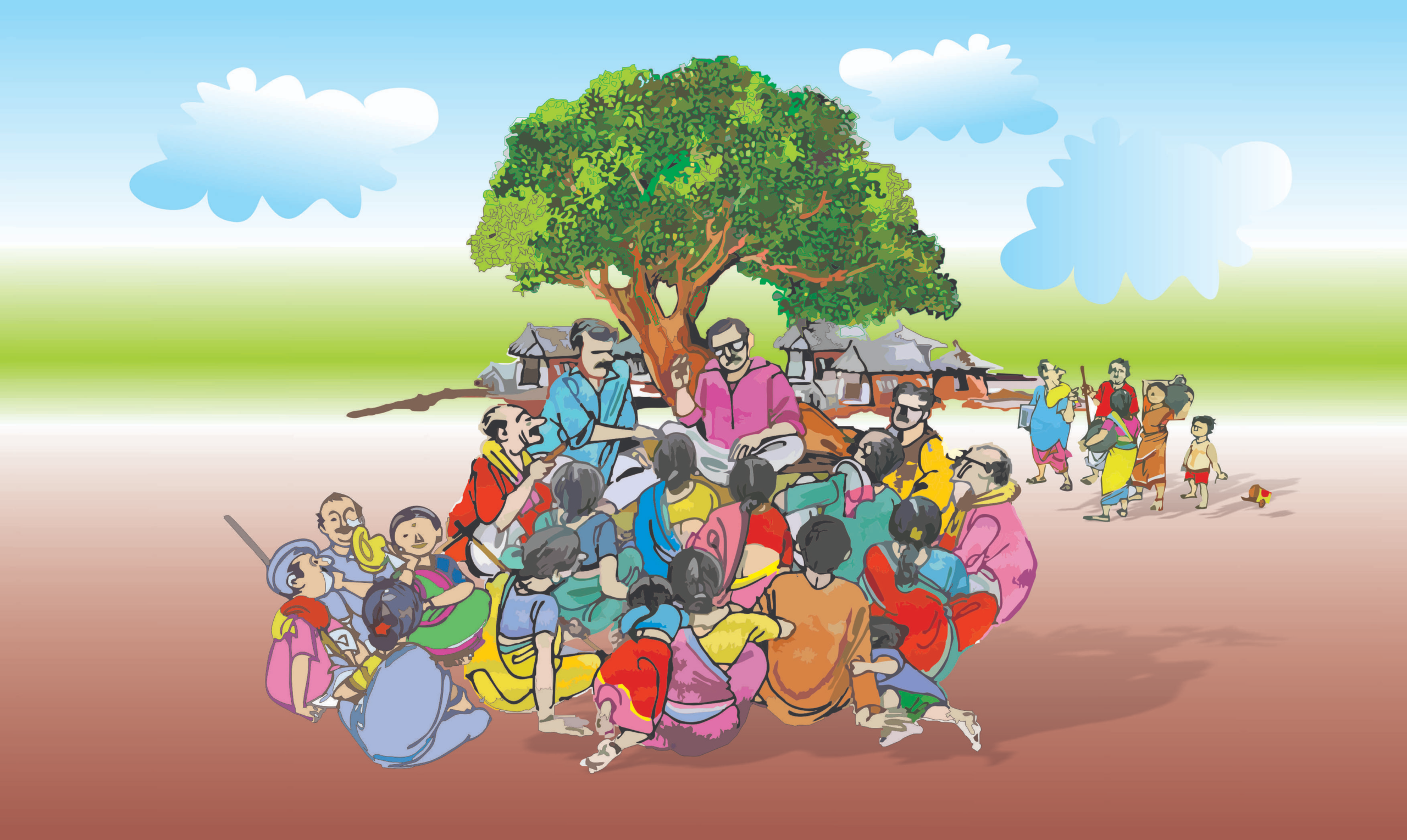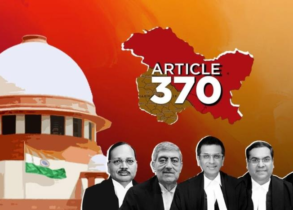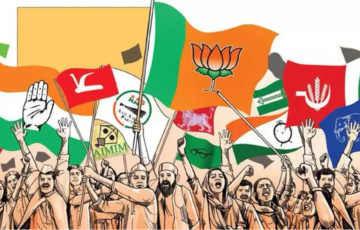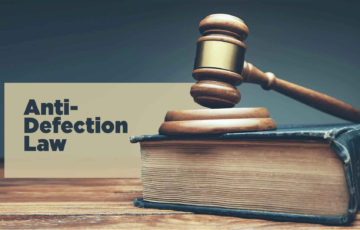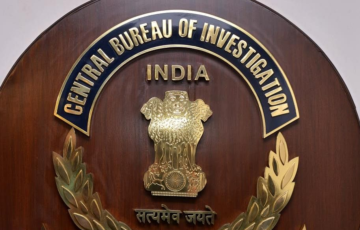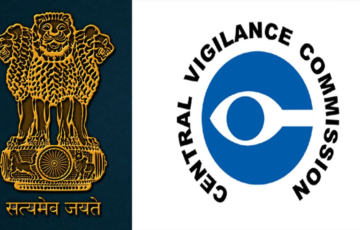PANCHAYATI RAJ
Introduction
- The Panchayati Raj system in India indeed signifies the system of rural local self-government. It is a decentralized form of government that aims to bring democracy to the grassroots level in rural areas. This system has been established in all the states of India through acts passed by the respective state legislatures. The Panchayati Raj system is primarily responsible for rural development and local governance.
- The 73rd Constitutional Amendment Act of 1992, also known as the Panchayati Raj Act, constitutionalized the Panchayati Raj system in India. This landmark legislation provided a constitutional status to the panchayats (local self-governing bodies) and laid down the framework for their functioning. It aimed to strengthen democracy by promoting grassroots-level decision-making and local self-governance.
Committees on Panchayati Raj
Panchayati Raj- Balwant Rai Mehta Committee
- The Balwant Rai Mehta Committee, appointed in 1957, played a pivotal role in shaping the Panchayati Raj system in India. Its recommendations were aimed at improving the functioning of the Community Development Programme and the National Extension Service. Here are the key recommendations of the committee:
- Three-Tier Panchayati Raj System: The committee proposed the establishment of a three-tier Panchayati Raj system to decentralize governance and development. This system consists of:
- Gram Panchayat at the Village Level: The Gram Panchayat would serve as the local self-government body at the village level, directly addressing the needs and concerns of the rural population.
- Panchayat Samiti at the Block Level: The Panchayat Samiti would operate at the block or intermediate level. It would have the authority to coordinate and execute development activities within its jurisdiction.
- Zila Parishad at the District Level: The Zila Parishad would function at the district level, providing advisory, coordinating, and supervisory support to the lower tiers of the Panchayati Raj system.
- Election of Representatives: The Balwant Rai Mehta Committee recommended a mix of direct and indirect elections for the various tiers of Panchayati Raj:
- Directly Elected Representatives for Gram Panchayats: Members of the Gram Panchayat, at the village level, should be elected directly by the local population. This direct election ensures that local residents have a say in their community’s affairs.
- Indirectly Elected Members for Panchayat Samiti and Zila Parishad: Members of the Panchayat Samiti (block level) and Zila Parishad (district level) would be elected indirectly. In this system, elected representatives from the Gram Panchayats would, in turn, elect members for these higher-tier bodies.
- Roles of Panchayat Samiti and Zila Parishad: The Panchayat Samiti, at the block level, would primarily serve as the executive body responsible for implementing development programs and activities. In contrast, the Zila Parishad, at the district level, would have an advisory, coordinating, and supervisory role. The District Collector would chair the Zila Parishad.
- The recommendations of the Balwant Rai Mehta Committee laid the foundation for the Panchayati Raj system in India, which was later further developed and strengthened through constitutional amendments and state-level legislation. This system aims to promote grassroots democracy, local self-governance, and effective rural development.
Ashok Mehta Committee
- The Ashok Mehta Committee, appointed in 1977, was tasked with recommending measures to revive and strengthen the declining Panchayati Raj system in India. The committee put forth several significant recommendations:
- Two-Tier System: The committee proposed replacing the existing three-tier Panchayati Raj system with a two-tier system. Under this new structure:
- Zila Parishad at the District Level: The highest tier would be the Zila Parishad, functioning at the district level. It would be responsible for coordinating and overseeing development activities and governance within the district.
- Mandal Panchayat at the Intermediate Level: Below the Zila Parishad, there would be an intermediate level referred to as the Mandal Panchayat. This body would consist of a group of villages with a total population of 15,000 to 20,000. It would serve as an intermediary layer of local self-government.
- Decentralization to the District Level: The Ashok Mehta Committee recommended that the district should be the primary point for decentralization under popular supervision below the state level. This emphasizes the role of the district in local governance and development.
- District-Level Planning: Planning for development and governance at the district level would be carried out by the Zila Parishad, which would function as the executive body responsible for implementing development programs and activities within the district.
- Compulsory Taxation Powers: The Panchayati Raj institutions, under this framework, should have compulsory powers of taxation. This means that they should be empowered to levy and collect taxes to mobilize their financial resources. This would provide them with a stable source of revenue to fund local development initiatives.
- Regular Social Audit: The committee recommended the implementation of a regular social audit at the district level, conducted by a district-level agency. A social audit helps ensure transparency, accountability, and the proper utilization of resources in local governance and development initiatives.
- The recommendations of the Ashok Mehta Committee sought to streamline the Panchayati Raj system and strengthen the role of districts in local governance and development planning. These recommendations, along with subsequent developments, have influenced the evolution of Panchayati Raj institutions in India and contributed to the decentralization of power and decision-making to the grassroots level.
G. V. K. Rao Committee
- The G. V. K. Rao Committee, appointed by the Planning Commission in 1985, was tasked with reviewing the existing administrative arrangements for rural development and poverty alleviation programs in India. The committee recognized the challenges faced by Panchayati Raj institutions, including the bureaucratization of development administration and the weakening of democratic decentralization. It referred to this situation as ‘grass without roots.’ The committee made several key recommendations to address these issues:
- Empowering Zila Parishad: The committee recommended that the Zila Parishad should play a pivotal role in the democratic decentralization process. It should be the principal body responsible for managing and overseeing the implementation of developmental programs at the district level. This approach aimed to strengthen the district-level governance structure and make it more effective in addressing local development needs.
- Specific Roles for Each Panchayat Level: To enhance the effectiveness of the Panchayati Raj system, the committee suggested that each level of the system be assigned specific roles in planning, implementing, and monitoring rural development programs. This allocation of responsibilities would ensure that there is a clear division of labor and accountability at each level of governance.
- Creation of District Development Commissioner: The committee recommended the creation of the position of District Development Commissioner (DDC), who would serve as the chief executive officer of the Zila Parishad. The DDC would be responsible for coordinating and overseeing the execution of development programs at the district level. This move aimed to streamline decision-making and improve the administrative structure at the district level.
- Regular Elections: The committee stressed the importance of holding regular elections at each level of the Panchayati Raj system. Regular elections are crucial for maintaining democratic processes and ensuring the continuity of local governance. By conducting periodic elections, the Panchayati Raj institutions can remain accountable to the local population.
- The recommendations put forward by the G. V. K. Rao Committee sought to address the challenges facing rural development and governance in India. By emphasizing the role of Zila Parishads, clarifying the roles of different Panchayat levels, creating the position of District Development Commissioner, and advocating for regular elections, the committee aimed to strengthen the democratic decentralization process and enhance the effectiveness of Panchayati Raj institutions in addressing local development needs.
L. M. Singhvi Committee
- The L. M. Singhvi Committee, appointed by the Government of India in 1986, aimed to revitalize the Panchayati Raj systems for the promotion of democracy and development. The committee put forward several significant recommendations:
- Constitutional Recognition: The committee recommended that the Panchayati Raj systems should be constitutionally recognized. This recognition would entail establishing provisions to ensure free and fair elections to these local governing bodies. By providing constitutional backing, the committee aimed to strengthen the democratic foundation of Panchayati Raj institutions.
- Reorganization of Villages: The committee emphasized the need to reorganize villages to make Gram Panchayats more viable and effective. The reorganization would likely involve adjusting the administrative boundaries of villages to enhance their governance capabilities. This restructured framework would contribute to better local governance.
- Empowering Gram Sabha: The committee recognized the importance of the Gram Sabha, the village-level assembly of residents. It recommended that Gram Panchayats should be directed to allocate more finances for their activities. Additionally, there was an emphasis on promoting the establishment of Nyaya Panchayats, which would play a role in administering justice at the local level.
- Judicial Tribunals: To address matters relating to the elections of Panchayati Raj institutions and other issues concerning their functioning, the committee proposed the establishment of judicial tribunals in each state. These tribunals would serve as legal entities to adjudicate disputes and ensure the fair conduct of elections and functioning of Panchayati Raj institutions.
- The recommendations of the L. M. Singhvi Committee aimed to provide constitutional recognition to Panchayati Raj systems, reorganize villages for improved governance, empower Gram Sabhas, and establish judicial tribunals to address legal matters. These proposals sought to enhance the democratic and developmental roles of Panchayati Raj institutions in India.
Thungon Committee
- The Thungon Committee, a sub-committee of the Consultative Committee of Parliament, was constituted in 1988 under the chairmanship of P.K. Thungon. Its primary objective was to examine the political and administrative structure within districts for the purpose of district planning. The committee made several significant recommendations:
- Constitutional Recognition: The Thungon Committee recommended that Panchayati Raj bodies should be constitutionally recognized. It advocated for a three-tier system, consisting of Panchayats at the village, block, and district levels. This constitutional recognition aimed to solidify the role and authority of these local governing bodies.
- Empowering Zilla Parishad: The committee proposed that the Zilla Parishad, the district-level Panchayat, should serve as the pivotal institution within the Panchayati Raj system. It was recommended to act as the primary planning and development agency at the district level. This would centralize planning and development functions under the Zilla Parishad’s jurisdiction.
- Fixed Tenure: To ensure continuity and stability in governance, the committee suggested that Panchayati Raj bodies should have a fixed tenure of five years. The maximum period of supersession, or the temporary dissolution of a body, was recommended to be limited to six months to maintain local governance continuity.
- List of Subjects: The committee proposed the preparation of a detailed list of subjects and responsibilities for Panchayati Raj institutions, which should be incorporated into the Indian Constitution. This would define the scope and functions of these local governing bodies.
- Reservation of Seats: The committee recommended that reservation of seats in all three tiers of Panchayati Raj should be based on population. Additionally, it emphasized the importance of providing reservation for women, aiming to ensure greater gender representation in local governance.
- State Finance Commission: To facilitate the financial autonomy of Panchayati Raj institutions, the committee recommended the establishment of a State Finance Commission in each state. These commissions would be responsible for laying down criteria and guidelines for the devolution of finances to Panchayati Raj institutions.
- District Collector as Chief Executive Officer: In terms of administrative leadership, the committee proposed that the district collector should serve as the chief executive officer of the Zilla Parishad. This arrangement would help in ensuring effective coordination and implementation of development initiatives at the district level.
- The recommendations of the Thungon Committee were aimed at strengthening the Panchayati Raj system in India by providing constitutional recognition, centralizing planning at the district level, ensuring fixed tenures, defining the subjects of responsibility, promoting reservation for women, establishing State Finance Commissions, and designating the district collector as the chief executive officer of the Zilla Parishad. These measures were intended to enhance the effectiveness and functioning of local governance in the country.
Gadgil Committee
- The Gadgil Committee, officially known as the Committee on Policy and Programmes, was constituted in 1988 with the objective of examining and making recommendations related to Panchayati Raj institutions and their role in governance. The committee put forth several significant recommendations:
- Constitutional Status: The committee recommended that Panchayati Raj institutions should be constitutionally recognized and granted a constitutional status. This recognition aimed to institutionalize and safeguard the role and authority of these local governance bodies.
- Three-Tier System: It proposed the adoption of a three-tier system of Panchayati Raj, which would consist of Panchayats at the village, block, and district levels. This structure aimed to provide a hierarchical framework for local governance and planning.
- Fixed Term: The committee recommended fixing the term of Panchayati Raj institutions at five years. It also suggested that members of the Panchayats at all three levels should be directly elected. To oversee the conduction of elections, the establishment of a State Election Commission was advised.
- Reservation: The committee emphasized the importance of providing reservation for Scheduled Castes (SCs), Scheduled Tribes (STs), and women within the Panchayati Raj bodies. Reservation measures were intended to ensure greater representation of marginalized communities and women in local governance.
- Planning and Taxation Powers: Panchayati Raj institutions were recommended to be entrusted with the responsibility of preparing and implementing plans for socio-economic development at the local level. They should also be empowered to levy, collect, and appropriate taxes and duties, which would provide them with the financial resources needed to carry out their functions.
- State Finance Commission: To facilitate the allocation of finances to Panchayats and ensure their fiscal autonomy, the committee suggested the establishment of State Finance Commissions in each state. These commissions would be responsible for determining the distribution of financial resources among Panchayati Raj institutions.
- The recommendations of the Gadgil Committee served as the foundation for drafting an amendment bill aimed at providing constitutional status and protection to Panchayati Raj institutions. This committee’s work played a crucial role in shaping the evolution of local governance in India, emphasizing constitutional recognition, reservation, planning, taxation powers, and the establishment of State Finance Commissions for Panchayati Raj institutions.
73RD AMENDMENT ACT OF 1992
Significance
- The 73rd Amendment Act to the Indian Constitution, which added a new Part-IX, ‘The Panchayats,’ along with the Eleventh Schedule, marks a pivotal moment in the evolution of grassroots democracy in India. It operationalized Article 40 of the Constitution, obligating the state to empower village Panchayats. The Act confers constitutional status to Panchayati Raj institutions, making them legally binding. It categorizes provisions into compulsory and voluntary, allowing flexibility for states. This legislation fundamentally transforms representative democracy into participatory democracy, revolutionizing the practice of building democracy at the grassroots level in the country.
Salient Features
- Gram Sabha: The Gram Sabha, comprising eligible voters in a village, is a fundamental unit. It has the authority to approve development plans and budgets, oversee local governance, and hold Panchayat members accountable.
- For example, in a village in Uttar Pradesh, the Gram Sabha decides to allocate a portion of its budget to build a community health center, based on the healthcare needs of the residents.
- Three-tier System: The Panchayati Raj system comprises three tiers – village, intermediate (block), and district levels. This structure ensures that local governance is standardized across the country.
- In a district in Karnataka, the District Panchayat coordinates the efforts of several Intermediate Panchayats (Taluk Panchayats), which, in turn, manage and collaborate with various Gram Panchayats in their respective regions.
- Election of Members and Chairpersons: The members to all the levels of the Panchayati Raj are elected directly while the chairpersons to the intermediate and the district level are elected indirectly from the elected members. Also, the Chairperson at the village level is elected as determined by the state government.
- Reservation of Seats: It states that reservation is to be provided for SC and ST at all three tiers by their population percentage. In the case of Women, not less than one-third of the total number of seats to be reserved for women. There is also a provision that not less than one-third of the total number of offices for chairpersons at all levels of the panchayat be reserved for women. The act also authorizes state legislatures to decide on the reservation of seats in any level of panchayat or office of chairperson in favor of backward classes.
- In a Gram Panchayat in Odisha, a significant portion of seats is reserved for women, allowing for better gender representation and participation in local decision-making.
- Duration of Panchayat: The Act mandates a five-year term for all panchayat levels, which can be dissolved before its completion. Fresh elections for the new panchayat must be completed before the five-year term expires or six months from its dissolution.
- For example, if a Gram Panchayat in Haryana is dissolved after three years, elections are held to select new representatives who serve the remaining two years.
- State Election Commission: The state election commission oversees the preparation of electoral rolls and conducts panchayat elections, with a state election commissioner appointed by the Governor. The governor determines the commissioner’s terms and tenure, while the state legislature can make provisions for panchayat elections.
- In West Bengal, the State Election Commission manages the scheduling, organization, and supervision of Panchayat elections to ensure fairness and transparency.
- Disqualification: A person can be disqualified for being chosen as or a member of panchayat under current laws for state legislature elections or state legislature-made laws. However, no person shall be disqualified on the ground that he is less than 25 years of age if he has attained the age of 21 years. Disqualification questions should be directed to an authority determined by state legislatures.
- Finance Commission: The Finance Commission, appointed by the Governor, reviews the financial status of Panchayats.
- In Tamil Nadu, the Finance Commission assesses the allocation of state taxes and grants to Panchayats, which are then used for local development projects, such as road construction and sanitation facilities.
- Powers and Functions of Panchayats: The Panchayats can be granted the necessary powers and authority to function as self-governing institutions by the state legislature, including provisions for Gram Panchayat’s work on economic development and social justice planning and implementation.
- In a village in Andhra Pradesh, the Gram Panchayat collaborates with the state government to implement a government-sponsored sanitation project, addressing the specific sanitation needs of the village.
- Finances: States can authorize Panchayats to levy and collect local taxes.
- For example, in a Gram Panchayat in Maharashtra, the local government levies property taxes to fund infrastructure improvements, including road repairs and water supply projects.
- Audit of Accounts: State legislatures define provisions for maintaining and auditing Panchayats’ accounts.
- In Kerala, the state government mandates regular audits of Gram Panchayat accounts to ensure transparency and accountability in financial matters.
- Application to Union Territories: The Panchayati Raj provisions apply to Union Territories as directed by the President.
- For instance, in the Union Territory of Puducherry, the Panchayati Raj system operates with elected representatives at the village, commune, and district levels, mirroring the structure found in states.
- Exempted States and Areas: Some states and areas were initially exempted from the 73rd Amendment Act. However, under the Panchayats Extension to Scheduled Areas (PESA) Act, provisions were extended to scheduled areas and tribal areas.
- For example, in tribal regions of Jharkhand, the PESA Act empowered local Panchayats to manage and control natural resources, such as land and forests, to better serve the needs of indigenous communities.
- Continuance of Existing Laws and Panchayats: State laws regarding Panchayats remained in effect after the 73rd Amendment Act for a year. Subsequently, states passed new Panchayati Raj Acts to align with the Amendment.
- In Karnataka, the state legislature enacted a comprehensive Panchayati Raj Act in 1993, paving the way for the reorganization and strengthening of Panchayati Raj institutions.
- Bar to Interference by Courts in Electoral Matters: The Act limits court interference in Panchayat elections.
- In a case from Maharashtra, a court ruled that election disputes related to Panchayat elections should be resolved through the election petition process defined by the state legislature, rather than through conventional legal channels.
- Empowerment of Women: The Act has led to increased representation of women in Panchayats.
- For example, in a Gram Panchayat in Kerala, a woman serves as the Sarpanch (village head) and actively works on initiatives for women’s welfare and development.
- Social Justice and Backward Classes: The Act empowers states to provide reservations for backward classes. In a village in Madhya Pradesh, a Panchayat has reserved seats for a community classified as socially and educationally backward, ensuring their participation in local governance.
- Local Development Initiatives: Panchayats often collaborate with government departments to implement local development projects. In a village in Bihar, the Gram Panchayat partners with the Department of Agriculture to promote modern farming techniques and improve agricultural productivity.
- Accountability and Transparency: The Act mandates Panchayats to maintain transparent financial records and undergo audits. In a Gram Panchayat in Assam, regular audits of accounts are conducted to ensure funds are utilized efficiently and for the benefit of the local community.
73rd Amendment Act (1992) – Compulsory and Voluntary Provisions
Compulsory Provisions
- These are key provisions and features related to the organization and functioning of the Panchayati Raj system in India, particularly at the Gram Panchayat (village) level:
- Organization of Gram Sabha in Villages: The Gram Sabha is a fundamental unit of the Panchayati Raj system, consisting of all eligible voters in a village. It serves as the local decision-making body and plays a crucial role in approving development plans and budgets for the village.
- Three-tier System: The Panchayati Raj system is organized into three tiers: the Gram Panchayat at the village level, the Intermediate Panchayat at the block or taluk level, and the District Panchayat at the district level. This three-tier structure ensures that governance is uniform and structured throughout the country.
- Direct Election to All Seats: Members of the Panchayats at all three levels are elected directly by the people of the respective areas. For example, in a Gram Panchayat in Maharashtra, residents directly vote to elect their Panchayat members.
- Indirect Election of Chairpersons: The Chairpersons of the Intermediate and District Panchayats are elected indirectly from among the elected members of these Panchayats. This process involves Panchayat members voting to choose the Chairperson.
- Voting Rights: Both the Chairpersons and other members of Panchayats, whether elected directly or indirectly, have the right to vote on various local matters, including budget allocation and development projects.
- Minimum Age for Contesting Elections: To be eligible to contest a Panchayat election, candidates must be at least 21 years of age.
- Reservations: Reservations are made to ensure representation of marginalized groups. This includes reservations for Scheduled Castes (SC), Scheduled Tribes (ST), and women. In many Gram Panchayats, approximately one-third of the seats are reserved for women to promote gender equality in local governance.
- Tenure: Panchayats are elected for a fixed term of five years. In case a Panchayat is superseded, fresh elections must be held within six months to ensure continuous governance.
- State Finance Commission: State Finance Commissions are established every five years to assess the financial status of Panchayats. They make recommendations on the distribution of taxes between the state and Panchayats, helping to ensure financial stability for local development.
- State Election Commission: The State Election Commission is responsible for conducting Panchayat elections, ensuring a fair and transparent electoral process.
Voluntary Provisions
- Empowering Gram Sabha: The Gram Sabha, at the village level, is endowed with powers and functions, enabling it to participate in local governance, approve plans, and make decisions on village-level matters.
- Election of Village Panchayat Chairperson: The manner of election of the chairperson of the village Panchayat is determined, allowing for local variations in the election process.
- Representation of Chairpersons in Higher Panchayats: Chairpersons of village Panchayats are provided representation in higher-level Panchayats, such as Intermediate Panchayats or District Panchayats, facilitating coordination and collaboration.
- Representation of Intermediate Panchayat Chairpersons: Chairpersons of Intermediate Panchayats are represented in District Panchayats, creating a hierarchical structure within the Panchayati Raj system.
- Representation of MPs and MLAs: Members of Parliament (MPs) and Members of Legislative Assembly (MLAs) are given representation in Panchayats at various levels falling within their constituencies. This linkage fosters cooperation between local and national representatives.
- Reservation of Seats for Backward Classes: The Act mandates reservation of seats for backward classes, ensuring representation and social justice. This helps empower marginalized communities to participate in local governance.
- Empowerment of Panchayats: Panchayats are granted powers and authority to function as self-governing institutions, ensuring autonomy and decision-making at the local level.
- Devolution of Powers and Responsibilities: Panchayats are entrusted with powers to prepare plans for economic development and social justice, along with the performance of various functions listed in the Constitution’s Eleventh Schedule. This enables local-level planning and development.
- Financial Powers for Panchayats: Panchayats are authorized to levy, collect, and appropriate taxes, duties, tolls, and fees. This financial autonomy empowers them to generate revenue for local development.
- Assignment of State Government Revenue: Panchayats are assigned the taxes, duties, tolls, and fees levied and collected by the state government. This allocation of revenue ensures that Panchayats have resources to fund local projects and services.
- Grants-in-Aid: The state government provides grants-in-aid to Panchayats from the consolidated fund of the state. This financial support supplements local resources, further promoting development.
- Constitution of Funds: Funds are established to credit all Panchayat funds, ensuring systematic financial management and allocation of resources for local projects and initiatives.
| The Eleventh Schedule of the Indian Constitution |
| The Eleventh Schedule of the Indian Constitution lists the “Powers, Authority, and Responsibilities of Panchayats” (local self-government institutions). It was added to the Constitution through the 73rd Amendment Act of 1992, which aimed to strengthen and institutionalize Panchayati Raj institutions in India. The Eleventh Schedule outlines the various functions and responsibilities that can be entrusted to Panchayats (village, intermediate, and district levels) to promote local self-governance and rural development.
The Eleventh Schedule contains a total of 29 functional items, and these functions can be broadly categorized as follows:
The Eleventh Schedule of the Indian Constitution provides a comprehensive framework for the roles and responsibilities of Panchayats in rural governance and development, empowering local self-government institutions to address the diverse needs of their communities. |
PESA ACT OF 1996 (EXTENSION ACT)
- The Panchayats (Extension to the Scheduled Areas) Act, 1996, often referred to as the PESA Act of 1996, is a significant legislation in India. It was enacted to provide a legal framework for governance in the Scheduled Areas, which are predominantly inhabited by tribal communities. The Scheduled Areas are designated regions in India where tribal populations are concentrated, and special protections and provisions are made for their welfare and development. The PESA Act was enacted to ensure self-governance and autonomy in these areas.
Objectives
The objectives of the Panchayats (Extension to the Scheduled Areas) Act, or PESA Act of 1996, are as follows:
- Extension of Constitutional Provisions: The Act aims to extend the provisions of Part IX of the Indian Constitution, which relate to Panchayats (local self-government bodies), to the Scheduled Areas with certain modifications. This inclusion brings decentralized governance to these areas.
- Self-Rule for Tribal Populations: PESA seeks to provide self-rule for the majority of the tribal population residing in the Scheduled Areas. It empowers these communities to have greater control over their local governance and resources.
- Village Governance and Participatory Democracy: The Act promotes village governance with participatory democracy. It places the Gram Sabha at the center of all activities, ensuring active participation of local communities in decision-making processes.
- Consistent Administrative Framework: PESA aims to create an administrative framework that is consistent with the traditional practices and customs of tribal communities. It respects and integrates local traditions and customary laws.
- Preservation of Tribal Traditions: The Act is designed to safeguard and preserve the cultural traditions and customs of tribal communities. It recognizes the importance of these traditions in the lives of the tribal population.
- Empowering Panchayats for Tribal Needs: PESA empowers Panchayats at the appropriate levels with specific powers that are conducive to the unique requirements and aspirations of tribal communities. This enables tailored governance and development in Scheduled Areas.
- Preventing Centralization of Powers: PESA serves as a safeguard to prevent Panchayats at higher levels from assuming the powers and authority of Panchayats at lower levels, particularly those at the Gram Sabha level. This ensures that decision-making remains decentralized and participatory.
Salient Features
- The features and provisions of the Panchayats (Extension to the Scheduled Areas) Act, 1996, also known as the PESA Act of 1996, are as follows:
- Customary Law and Practices: State legislation on Panchayats in the Scheduled Areas must align with the customary law, social practices, and traditional management of community resources in these areas.
- Definition of Village: A village is defined as a habitation, group of habitations, hamlet, or group of hamlets where a community manages its affairs in accordance with traditions and customs.
- Gram Sabha: Every village shall have a Gram Sabha, consisting of persons whose names are included in the electoral rolls for the village-level Panchayat.
- Preservation of Traditions and Customs: The Gram Sabha is competent to safeguard and preserve the traditions, customs, cultural identity, community resources, and customary modes of dispute resolution of the people in the Scheduled Areas.
- Approval of Plans: The Gram Sabha has the authority to approve plans, programs, and projects for socio-economic development before their implementation by the village-level Panchayat. It is also responsible for identifying beneficiaries under poverty alleviation and other programs.
- Certification of Fund Utilization: The village-level Panchayat must obtain certification from the Gram Sabha regarding the utilization of funds for the approved plans, programs, and projects.
- Reservation of Seats: In Scheduled Areas, the reservation of seats in every Panchayat is proportionate to the population of the communities for whom reservation is sought. At least one-half of the total number of seats must be reserved for Scheduled Tribes, and all chairperson positions are reserved for Scheduled Tribes.
- Nomination by State Government: The state government may nominate Scheduled Tribes that have no representation in the Panchayats at the intermediate or district levels, with such nominations not exceeding one-tenth of the total members to be elected in that Panchayat.
- Consultation on Land Acquisition: The Gram Sabha or Panchayats at the appropriate level must be consulted before land acquisition for development projects or before resettlement or rehabilitation of persons affected by such projects in the Scheduled Areas. However, project planning and implementation coordination occur at the state level.
- Management of Minor Water Bodies: Planning and management of minor water bodies in the Scheduled Areas are entrusted to Panchayats at the appropriate level.
- Mining Recommendations: The recommendations of the Gram Sabha or Panchayats at the appropriate level are mandatory for granting prospecting licenses or mining leases for minor minerals in the Scheduled Areas.
- Concession for Mining: Prior recommendations of the Gram Sabha or Panchayats at the appropriate level are mandatory for granting concessions for the exploitation of minor minerals through auctions.
- Specific Powers and Authorities: Panchayats at the appropriate level and the Gram Sabha are endowed with specific powers, including enforcing prohibition, owning minor forest produce, preventing land alienation, managing village markets, controlling money lending to Scheduled Tribes, overseeing social sector institutions and functionaries, controlling local plans and resources, and exercising authority over tribal sub-plans.
- Prevention of Power Assumption: State legislation contains safeguards to ensure that Panchayats at higher levels do not assume the powers and authority of Panchayats at lower levels or of the Gram Sabha.
- Administrative Arrangements: The State Legislature is encouraged to follow the pattern of the Sixth Schedule to the Constitution when designing administrative arrangements for Panchayats at district levels in the Scheduled Areas.
- Repeal of Inconsistent Laws: Any law relating to Panchayats in the Scheduled Areas that is inconsistent with the provisions of the PESA Act ceases to be in force one year after the Act’s assent by the President. Existing Panchayats continue until the end of their term unless dissolved by the State Legislature.
Reasons for Ineffective Performance
The suboptimal performance of Panchayati Raj Institutions (PRIs) in India, despite constitutional recognition through the 73rd Amendment Act of 1992, can be attributed to several reasons:
- Lack of Adequate Devolution: Many states have not fully devolved functions, funds, and functionaries (often referred to as the “3Fs”) to PRIs, as required by the Constitution. Without adequate resources, PRIs cannot effectively fulfill their mandated roles.
- Excessive Bureaucratic Control: In some states, Gram Panchayats are placed in a subordinate position, leading to Sarpanches (village heads) spending significant time seeking funds and technical approvals from block offices. This bureaucratic control distorts the role of elected representatives.
- Tied Funds: Funds allocated for specific schemes may not be suitable for all areas within a district. This can result in either promoting inappropriate activities or underutilization of funds.
- Dependency on Government Funding: PRIs heavily rely on government funding, reducing their ability to raise resources independently. This dependence can deter public demands for social audits and transparency.
- Reluctance to Use Fiscal Powers: PRIs have the power to levy taxes, but many Panchayats do not exercise this authority, often due to concerns about taxing their own constituents.
- Status of the Gram Sabha: While the Gram Sabha (village assembly) has the potential to enhance transparency and accountability, many state Acts do not define its powers or specify procedures and penalties for officials, limiting its effectiveness.
- Creation of Parallel Bodies: Parallel Bodies (PBs) are sometimes established for expedited implementation and increased accountability. However, PBs can introduce partisan politics, corruption, and elite capture. They may also undermine the legitimate role of PRIs.
- Poor Infrastructure: Many Gram Panchayats lack essential infrastructure, including full-time secretaries, office buildings, and access to databases for planning and monitoring.
- Lack of Training: Elected representatives of PRIs often lack adequate training, limiting their ability to perform their functions effectively. Training is essential to ensure they understand their roles, responsibilities, and the complexities of various programs and procedures.
- Limited Technological Access: While district and intermediate Panchayats are connected with computers in some areas, a significant number of Gram Panchayats lack computing facilities. This digital divide can hinder effective governance and data management.
| Panchayat Devolution Index (PDI) |
Panchayat Devolution Index (PDI) conducted by the Ministry of Panchayati Raj. It is a composite index that measures the performance of panchayats in achieving the devolution of powers and functions as envisioned in the 73rd Amendment Act of the Indian Constitution. The PDI is calculated based on the following three parameters:
Here are some of the key findings of the PDI 2023: The overall PDI score for India in 2023 is 0.85, which indicates a high level of devolution of powers and functions to panchayats. The top five states in terms of PDI score in 2023 are:
The bottom five states in terms of PDI score in 2023 are:
The PDI 2023 report also highlights some areas where further devolution of powers and functions is needed, such as:
|
UPSC PREVIOUS YEAR QUESTIONS
1. The Constitution (Seventy-Third Amendment) Act, 1992, which aims at promoting the Panchayati Raj Institutions in the country, provides for which of the following? (2011)
1. Constitution of District Planning Committees.
2. State Election Commissions to conduct all panchayat elections.
3. Establishment of state Finance Commissions.
Select the correct answer using the codes given below:
(a) 1 only
(b) 1 and 2 only
(c) 2 and 3 only
(d) 1, 2 and 3
2. In the areas covered under the Panchayat (Extension to the Scheduled Areas) Act, 1996, what is the role/power of Gram Sabha? (2012)
1. Gram Sabha has the power to prevent alienation of land in the Scheduled Areas.
2. Gram Sabha has the ownership of minor forest produce.
3. Recommendation of Gram Sabha is required for granting prospecting licence or mining lease for any mineral in the Scheduled Areas.
Which of the statements given above is/are correct?
(a) 1 only
(b) 1 and 2 only
(c) 2 and 3 only
(d) 1, 2 and 3
3. The Government enacted the Panchayat Extension to Scheduled Areas (PESA) Act in 1996. Which one of the following is not identified as its objective? (2013)
(a) To provided self-governance
(b) To recognize traditional rights
(c) To create autonomous regions in tribal areas
(d) To free tribal people from exploitation
4. The fundamental object of the Panchayati Raj system is to ensure which among the following? (2015)
1. People’s participation in development
2. Political accountability
3. Democratic decentralisation
4. Financial mobilisation
Select the correct answer using the code given below.
(a) 1, 2 and 3 only
(b) 2 and 4 only
(c) 1 and 3 only
(d) 1, 2, 3 and 4
5. Consider the following statements: (2016)
1. The minimum age prescribed for any person to be a member of Panchayat is 25 years.
2. A Panchayat reconstituted after premature dissolution continues only for the remainder period.
Which of the statements given above is/are correct?
(a) 1 only
(b) 2 only
(c) Both 1 and 2
(d) Neither 1 nor 2
6. With reference to the ‘Gram Nyayalaya Act’, which of the following statements is/are correct? (2016)
1. As per the Act, Gram Nyayalayas can hear only civil cases and not criminal cases.
2. The Act allows local social activists as mediators/re-conciliators.
Select the correct answer using the code given below.
(a) 1 only
(b) 2 only
(c) Both 1 and 2
(d) Neither 1 nor 2
7. Local self-government can be best explained as an exercise in (2017)
(a) Federalism
(b) Democratic decentralisation
(c) Administrative delegation
(d) Direct democracy
8. Khap Panchayats have been in the news for functioning as extra-constitutional authorities, often delivering pronouncements amounting to human rights violations. Discuss critically the actions taken by the legislative, executive and the judiciary to set the things right in this regard. (2014)

